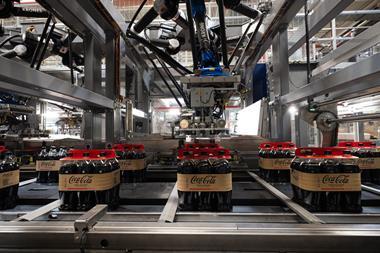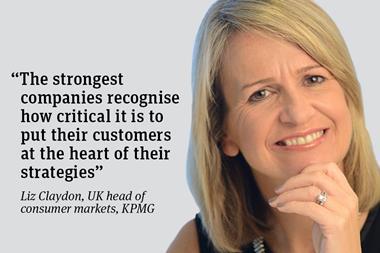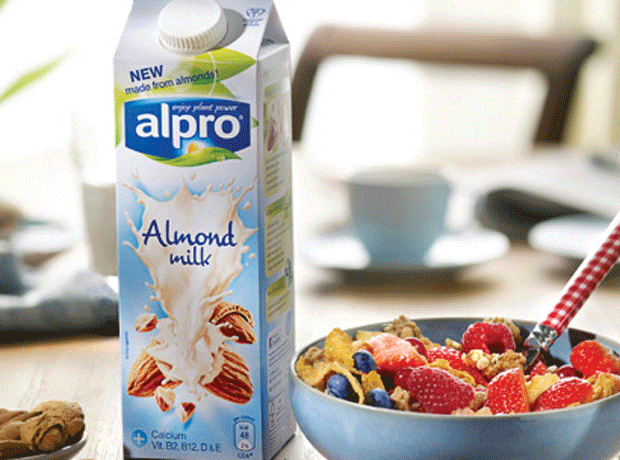Faced with an uncertain economy and nervous shoppers, Britain’s Biggest Brands might have given up on innovation. But while some are tweaking here and there, as Adam Leyland reports, others are seizing the moment with both hands
You mess with a winning formula at your peril.
And the perilous economy has persuaded many of Britain’s biggest brands to play it safe, most notably Coca-Cola, the biggest of them all. In the past two years, it’s stripped the proposition back to just Coke, Diet Coke and Coke Zero. And to telling effect: Britain’s Biggest Brand grew value sales by 8.3% to almost £1.1bn.
A similar focus instructed Kit Kat’s strategy. The biggest innovation from Heinz is a bigger pot of beans. Wrigley also went back to basics, cutting the long tail of under-performing SKUs. Even Innocent – a brand that has expanded considerably beyond its smoothie roots, and spawned several spin-off businesses – was quiet by its own standards in 2010.
So are Britain’s Biggest Brands tinkering cautiously at the edges of NPD? Does this list represent the establishment, leaving only smaller brands to offer genuine innovation?
Kate Waddell, practice director of consumer brands at Dragon Rouge, noted “lots of ingredient ‘guest’ brands in the last year – including Guinness, Branston, Reggae Reggae – which demonstrates a more risk-averse approach to innovation”.
The watchword is consolidation
But the old mantra about failing fast and failing cheap doesn’t always apply. Jonathan Warburton, chairman of the Bolton-based bakery, believes Britain’s Biggest Brands are a testament to long-term innovation. “When we moved into crumpets 15 years ago, they were a seasonal treat, eaten from November through February. Now we make a million packets every week and are the biggest crumpet manufacturer in the world.”
In recent years, the focus for Warburtons has been on delivering nationwide distribution across the range. But it is now investing multimillion pound sums on facilities for its new gluten-free bread, and Squarish Wraps and Sandwich Thins.
If the economy has changed anything, he says, it is ratcheting UP the investment spend. “You’re much more likely to make innovation work if you install THE best kit. In the past we’ve developed on the cheap, which provides an easy excuse for failure. When you buy the right kit, it not only allows you to manufacture the product at a price the consumer can afford; it focuses the team on offering the best insight.”
Like all the best innovation, the new Warburtons NPD identifies a gap in the market based on genuine consumer understanding, says Waddell.
“Squarish wraps and Sandwich Thins both answer a very simple, yet largely unanswered pair of consumer needs. Thins address the ‘I love a sandwich but it’s so heavily carb-loaded that I’ve blown my carb quota in one meal time’ insight. Squarish Wraps embrace a Dyson-esque approach, working out how all the bugbears can be addressed in one product. Without the plasticky texture and messy folded excess of conventional wraps, they’re lighter and easier to use: perfect for on-trend handheld eating.”
One of the most important “insights” to emerge in recent times is the ‘big night in’. The most obvious beneficiary has been Doritos, leaping 14 places in our ranking to 55th place on the back of 20.7% sales growth. But the launch, in September, of Walkers Extra Crunchy, is another example of brave and costly investment.
In recent years, many of the biggest players have created ‘niche’ quasi-independent brands as a way to gain more permission to innovate. A case in point is Walkers itself with Red Sky in 2009. But the new sharing bags of Extra Crunchy sit plainly and squarely on the main brand’s shoulders.
A similar focus on insight has instructed the development of new Heinz beans formats. Instead of messing about with flavours, innovation focused in 2008 on convenience with the microwaveable Snap Pots; in 2010 it switched to consumer concern over food waste.
“It’s a great example of a manufacturer improving the value proposition – less food wastage – and managing to charge a premium,” says Nick de Ujfalussy, Nielsen’s director of client consulting.
Cereal continues to be one of the most active areas of NPD. But the insights that drove arguably the two most important innovations came at the same solution – chocolate – from markedly different insights. Krave was an audacious take to make breakfast-skipping 16 to 25-year-olds reconsider breakfast and was an example of “properly disruptive branding”, according to Waddell, “that was especially bold to a market emerging from economic crisis”. Strong initial sales and brand extensions appear to indicate a long-term future for the brand.
At the same time, Weetabix Chocolate hit the spot with mums and kids alike. A cereal that children love to eat, it has half the sugar of other chocolate-flavoured cereals, says Sally Abbott, marketing director for the Weetabix Food Co. “The strong sales – more than three million packs of Weetabix Chocolate, helping the company to impressive sales growth of 5.2% – shows we’ve got this balance pretty much spot on,” she adds.
Healthier food has been one of the biggest drivers of innovation among Britain’s 100 Biggest Brands. Other examples include the reduction of salt – by 25% – for Kraft’s Dairylea spreads and slices portfolio; while six weeks ago, Warburtons introduced an eight loaf-strong gluten-free bread range.
Warburton says “the numbers are going the right way”, but admits quality is a work in progress. “Gluten-free is incredibly difficult to make. Three weeks ago approval ratings were half and half. This week, the balance, according to Facebook and blogs, is in our favour. But there are no excuses. We’ve got to make it work.”
Nor is reformulation guaranteed to improve the fortunes of an existing brand. While McVitie’s Digestives are up five places to 56th, and 9.3% to £122m in sales, Mars bars are down 20 places, due to a 14.2% decline in sales, to under £100m.
Where next for Mars? Perhaps biscuits. It was one of the first confectionery brands to extend into new categories, including ice cream and dairy drinks, and an innovator in its development of sharing bags. Lessons can now be learned from the successful reinvigoration of the biscuit aisle from the effective development of the Cadbury licence by Burton’s Foods.
What we are witnessing, says Innocent founder Richard Reed, is not the end of innovation but the elimination of frivolous decisions, or what Innocent calls “our fig & spelt moment”. It’s a reference to a doomed smoothie developed “with the best of intentions” but without true insight.
“Innovation is mercurial, and what we thought was the next big thing can turn out to be niche. Our realisation was that we needed to focus innovation: we’re more mindful now of whether a new product is genuinely what people want, week after week, or was inspired by one of us going to a fancy restaurant, or reading a foodie magazine.”
This autumn Innocent plans a completely new launch, its first in a while. The current area of focus for Innocent is not on innovation at all, however; it’s on better execution for its juices. Reed concedes that its first crack at fruit juices didn’t work; but it’s trying again with new carafe-shaped recyclable bottles backed by heavy investment in advertising, and February sales were “turbocharged”, says Reed. It’s a reminder of the importance of execution. “Physical availability is an innovation all of its own,” says Wrigley MD Ian Burton.
But the final word must go to Coca-Cola. VP of sales and customer development Ian Deste says innovation should not be thought about purely in terms of line extensions or variants.
“Innovation can apply equally to product, pack, promotion, and the overall application of the ‘marketing mix’ differentiated to different channels, customers and occasions. Our Open More Business program represents real innovation. Furthermore Coke is one brand in our stable of 28 brands, and innovation is evident everywhere and every way.”
Britain's 100 Biggest Brands 2011
You mess with a winning formula at your peril.
And the perilous economy has persuaded many of Britain’s biggest brands to play it safe, most notably Coca-Cola, the biggest of them all. In the past two years, it’s stripped the proposition back to just Coke, Diet Coke and Coke Zero. And to telling effect: Britain’s Biggest Brand grew value sales by 8.3% to almost £1.1bn.
A similar focus instructed Kit Kat’s strategy. The biggest innovation from Heinz is a bigger pot of beans. Wrigley also went back to basics, cutting the long tail of under-performing SKUs. Even Innocent – a brand that has expanded considerably beyond its smoothie roots, and spawned several spin-off businesses – was quiet by its own standards in 2010.
So are Britain’s Biggest Brands tinkering cautiously at the edges of NPD? Does this list represent the establishment, leaving only smaller brands to offer genuine innovation?
Kate Waddell, practice director of consumer brands at Dragon Rouge, noted “lots of ingredient ‘guest’ brands in the last year – including Guinness, Branston, Reggae Reggae – which demonstrates a more risk-averse approach to innovation”.
The watchword is consolidation
But the old mantra about failing fast and failing cheap doesn’t always apply. Jonathan Warburton, chairman of the Bolton-based bakery, believes Britain’s Biggest Brands are a testament to long-term innovation. “When we moved into crumpets 15 years ago, they were a seasonal treat, eaten from November through February. Now we make a million packets every week and are the biggest crumpet manufacturer in the world.”
In recent years, the focus for Warburtons has been on delivering nationwide distribution across the range. But it is now investing multimillion pound sums on facilities for its new gluten-free bread, and Squarish Wraps and Sandwich Thins.
If the economy has changed anything, he says, it is ratcheting UP the investment spend. “You’re much more likely to make innovation work if you install THE best kit. In the past we’ve developed on the cheap, which provides an easy excuse for failure. When you buy the right kit, it not only allows you to manufacture the product at a price the consumer can afford; it focuses the team on offering the best insight.”
Like all the best innovation, the new Warburtons NPD identifies a gap in the market based on genuine consumer understanding, says Waddell.
“Squarish wraps and Sandwich Thins both answer a very simple, yet largely unanswered pair of consumer needs. Thins address the ‘I love a sandwich but it’s so heavily carb-loaded that I’ve blown my carb quota in one meal time’ insight. Squarish Wraps embrace a Dyson-esque approach, working out how all the bugbears can be addressed in one product. Without the plasticky texture and messy folded excess of conventional wraps, they’re lighter and easier to use: perfect for on-trend handheld eating.”
One of the most important “insights” to emerge in recent times is the ‘big night in’. The most obvious beneficiary has been Doritos, leaping 14 places in our ranking to 55th place on the back of 20.7% sales growth. But the launch, in September, of Walkers Extra Crunchy, is another example of brave and costly investment.
In recent years, many of the biggest players have created ‘niche’ quasi-independent brands as a way to gain more permission to innovate. A case in point is Walkers itself with Red Sky in 2009. But the new sharing bags of Extra Crunchy sit plainly and squarely on the main brand’s shoulders.
A similar focus on insight has instructed the development of new Heinz beans formats. Instead of messing about with flavours, innovation focused in 2008 on convenience with the microwaveable Snap Pots; in 2010 it switched to consumer concern over food waste.
“It’s a great example of a manufacturer improving the value proposition – less food wastage – and managing to charge a premium,” says Nick de Ujfalussy, Nielsen’s director of client consulting.
Cereal continues to be one of the most active areas of NPD. But the insights that drove arguably the two most important innovations came at the same solution – chocolate – from markedly different insights. Krave was an audacious take to make breakfast-skipping 16 to 25-year-olds reconsider breakfast and was an example of “properly disruptive branding”, according to Waddell, “that was especially bold to a market emerging from economic crisis”. Strong initial sales and brand extensions appear to indicate a long-term future for the brand.
At the same time, Weetabix Chocolate hit the spot with mums and kids alike. A cereal that children love to eat, it has half the sugar of other chocolate-flavoured cereals, says Sally Abbott, marketing director for the Weetabix Food Co. “The strong sales – more than three million packs of Weetabix Chocolate, helping the company to impressive sales growth of 5.2% – shows we’ve got this balance pretty much spot on,” she adds.
Healthier food has been one of the biggest drivers of innovation among Britain’s 100 Biggest Brands. Other examples include the reduction of salt – by 25% – for Kraft’s Dairylea spreads and slices portfolio; while six weeks ago, Warburtons introduced an eight loaf-strong gluten-free bread range.
Warburton says “the numbers are going the right way”, but admits quality is a work in progress. “Gluten-free is incredibly difficult to make. Three weeks ago approval ratings were half and half. This week, the balance, according to Facebook and blogs, is in our favour. But there are no excuses. We’ve got to make it work.”
Nor is reformulation guaranteed to improve the fortunes of an existing brand. While McVitie’s Digestives are up five places to 56th, and 9.3% to £122m in sales, Mars bars are down 20 places, due to a 14.2% decline in sales, to under £100m.
Where next for Mars? Perhaps biscuits. It was one of the first confectionery brands to extend into new categories, including ice cream and dairy drinks, and an innovator in its development of sharing bags. Lessons can now be learned from the successful reinvigoration of the biscuit aisle from the effective development of the Cadbury licence by Burton’s Foods.
What we are witnessing, says Innocent founder Richard Reed, is not the end of innovation but the elimination of frivolous decisions, or what Innocent calls “our fig & spelt moment”. It’s a reference to a doomed smoothie developed “with the best of intentions” but without true insight.
“Innovation is mercurial, and what we thought was the next big thing can turn out to be niche. Our realisation was that we needed to focus innovation: we’re more mindful now of whether a new product is genuinely what people want, week after week, or was inspired by one of us going to a fancy restaurant, or reading a foodie magazine.”
This autumn Innocent plans a completely new launch, its first in a while. The current area of focus for Innocent is not on innovation at all, however; it’s on better execution for its juices. Reed concedes that its first crack at fruit juices didn’t work; but it’s trying again with new carafe-shaped recyclable bottles backed by heavy investment in advertising, and February sales were “turbocharged”, says Reed. It’s a reminder of the importance of execution. “Physical availability is an innovation all of its own,” says Wrigley MD Ian Burton.
But the final word must go to Coca-Cola. VP of sales and customer development Ian Deste says innovation should not be thought about purely in terms of line extensions or variants.
“Innovation can apply equally to product, pack, promotion, and the overall application of the ‘marketing mix’ differentiated to different channels, customers and occasions. Our Open More Business program represents real innovation. Furthermore Coke is one brand in our stable of 28 brands, and innovation is evident everywhere and every way.”
Britain's 100 Biggest Brands 2011









No comments yet